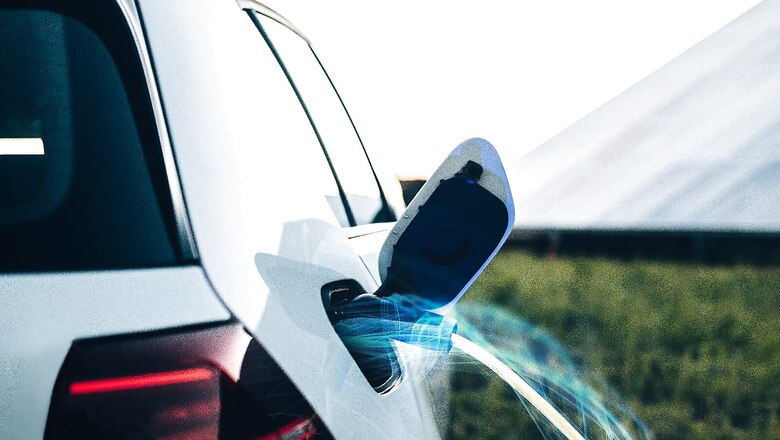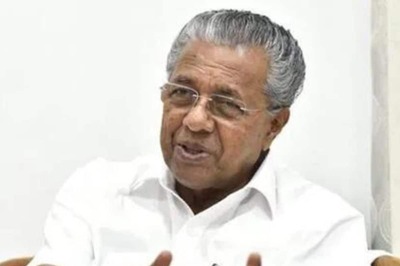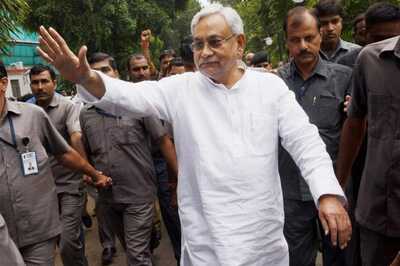
views
Green and sustainable economy is the need of the hour and India has shown great resolve towards achieving the same. From announcing a target of 450 GW renewable energy target by 2030 to targeting 30% EV sales by 2030, India has been proactively working towards creating a green and sustainable economy. Battery storage forms a critical component of the same and is presently one of the missing links between India’s green economy ambitions and their achievement.
Battery storage is not something novel and India already has a mature market for lead-acid batteries. It is the advanced chemistry cells (ACCs), which are expected to outdo the performance of the conventional batteries in the future. Application of ACCs in EVs is expected to improve air quality and reduce emissions because of their high-performance parameters and efficiency. Electric Vehicles (EVs) are expected to be the primary driver of ACC battery storage production with ~80% of ACCs demand in India expected to emanate from EVs alone. With increasing adoption of electric vehicles and renewable energy, demand for battery storage is expected to grow exponentially in the next 15-20 years.
Currently, India is largely import dependent for battery cells, with annual import value exceeding USD 1 Billion. This poses significant risk and makes India susceptible to geo-political and supply chain risks. This calls for a robust domestic battery storage infrastructure with focus on domestic manufacturing, eco-system development, conducive policy environment and cross-sector coordination.
Hence, to counter the growing dependence on imports and to capture the economic value of domestic manufacturing, the Government of India (GoI) had announced the “National Mission on Transformative Mobility and Battery Storage" and the Production-Linked Incentive scheme for ACCs. The objective of the PLI scheme is to render cash subsidies for 50 GWh of ACC manufacturing in the country with additional 5 GWh for certain niche technologies.
This would help in creating and building a value chain for battery storage and stimulate its use in the e-mobility sector of the country.
While India still lacks the capability and expertise for commercial scale manufacturing of advanced cells, it is expected that the Production-Linked Incentive (PLI) scheme will incentivize large domestic and international players in establishing giga-scale manufacturing set-ups in the country. This would provide one of the largest economic opportunities of the twenty-first century for several growth sectors such as electric vehicles, renewable energy and consumer electronics.
Apart from manufacturing of cell and pack, focus should also be given on indigenization of Battery Management System (BMS), refining of cell chemistries, recycling technologies and facilities for battery storage, and encouraging start-ups working on battery related software and applied electronics.
Adoption of suitable standards for ACCs can offer the requisite customer confidence on performance and safety aspects of such technologies. Harmonization of technical specifications and standards can also create a vibrant battery swapping infrastructure, which can potentially relieve vehicle owners from range anxiety and high upfront cost for purchase of battery.
In addition, India should also look at framing policies in encouraging and facilitating investments for the reuse and recycle of EV batteries, to facilitate a circular economy for cells and batteries.
India has witnessed significant interest from domestic and international investors for setting up manufacturing facilities after the PLI scheme was announced. At present, the demand generation for electric mobility adoption has been limited to purchase incentives for certain category of vehicles. Substantial policy interventions would be required to create demand for EVs by setting up a robust backbone for charging infrastructure, promoting RE based electricity charging, incentivizing charge-ready infrastructure deployment by Distribution Utilities, etc.
In addition, India currently lacks requisite upstream capability in battery. Out of five essential battery minerals (Lithium, Nickel, Cobalt, Manganese, and Graphite), India has reserves only for Manganese and Graphite. Absence of domestic raw material and a suitable ecosystem puts the Indian cell manufacturers at a cost disadvantage vis-a-vis the Chinese suppliers (market share ~72% in Li-ion battery manufacturing).
Enabling appropriate incentive structures for domestic manufacturing of ancillary equipment and materials (graphite, etc.), which should help improve domestic competitiveness, is another key priority which the Government needs to consider.
Thus, creation of a robust battery infrastructure will provide a huge economic, social and environmental impetus to the country. With strong domestic manufacturing and a robust eco-system, India will not only move a step forward towards decarbonizing the transport sector but also generate added economic value by substituting imports and creating opportunities for employment.
As per estimates provided in the EU Commission Policy Report of 2017 , it is noted that a competitive Li-ion cell & battery manufacturing facility can create 90-180 jobs per GWh per annum of production. An integrated approach with focus on Public-Private partnership, close coordination between stakeholders and policy enactment could transform India as a top investment destination for battery storage and the allied ecosystem.
Read all the Latest News , Breaking News and Ukraine-Russia War Live Updates here.



















Comments
0 comment